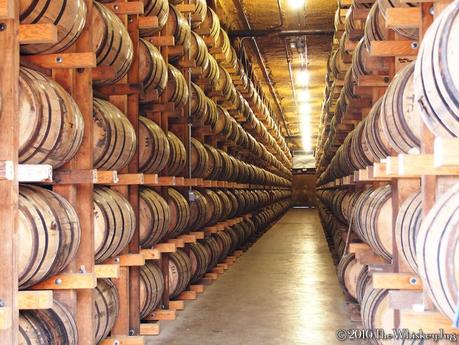Want to know why a certain whiskey, or any other distilled alcoholic beverage, is classified the way it is? Consult the TTB Standards of Identity (§5.22) and it will tell you. However, they can be a bit difficult to decipher at times because they’re written in legalese. To try and make them a bit easier to read, I’ve distilled the standards down and re-wrote them in plain English; pun 1,000% intended.
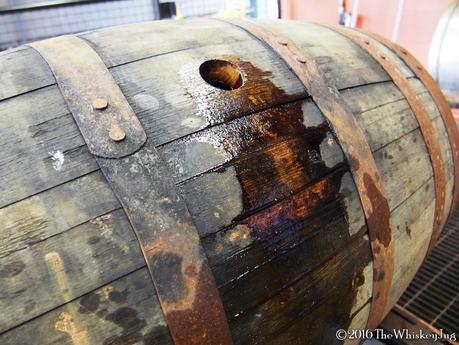
Before we dive into this plain English version of the TTB Standards of Identity for whiskey I have two quick notes/disclaimers to address.
- The original TTB Standards of Identity also include guidelines for things other than whiskey. I’ve removed those to keep this solely focused on whiskey and guidelines that relate to whiskey. I.e. these are not the full guidelines. To see the full guidelines for all beer, wine and spirits click this link.
- I’ve capitalized the names/theme we’re talking about to make it easier to pick out the terms being addressed. I’ve also used Ex: instead of E.g. for examples. I’m pointing this out before the grammar trolls do. I know these aren’t perfectly grammatically sound. They were stylistic choices to make a dense post easier to read.
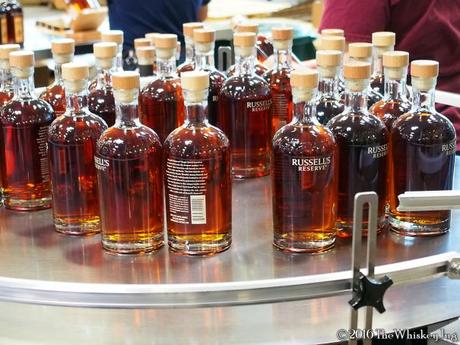
TTB Standards of Identity for Whiskey
(27 CFR PART 5—LABELING AND ADVERTISING OF DISTILLED SPIRITS: Subpart C—Standards of Identity for Distilled Spirits)
§ 5.22 The Standards of Identity
(a) Class 1: “Neutral spirits” or “alcohol” – Spirits distilled from any material (grain, fruit, whatever).
- Distilled to at least 190° proof (95% ABV) or higher.
- Bottled at not less than 80° proof (40% ABV).
(a)(1) “Vodka”
-
- A neutral spirit.
- Treated or filtered before bottling with charcoal or other materials… like crystals.
- Should “be without distinctive character, aroma, taste, or color”.
(a)(2) “Grain Spirits”
-
- Neutral spirits.
- Distilled from a fermented mash of grain.
- Stored in oak containers (denotes, but doesn’t explicitly mean, barrels. Could be an oak bucket or box).
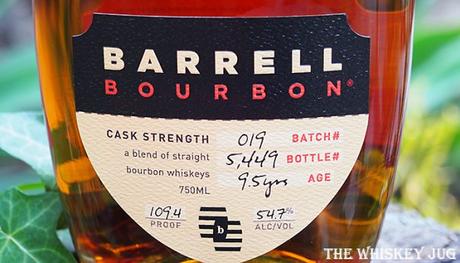
(b) Class 2: “Whisky” (also Whiskey) – Alcohol distilled from a fermented mash of grain.
- Distilled to less than 190° proof.
- Distillate should have “the taste, aroma, and characteristics generally attributed to Whisky”.
- Stored in oak containers (except corn whisky, details below).
- Bottled 80° proof (40% ABV) or higher.
- This term also includes mixtures of distillates that fall into the above, but don’t have a specific designation below (it’s the umbrella/catchall term).
(b)(1)(i) “Bourbon Whisky”, “Rye Whisky”, “Wheat Whisky”, “Malt Whisky”, or “Rye Malt Whisky”
-
- Distilled from a fermented grain mash.
- Mash must contain at least 51% corn (Bourbon Whiskey), rye (Rye Whiskey), wheat (Wheat Whiskey), malted barley (Malt Whiskey) or malted rye grain (Rye Malt Whiskey).
- Distilled no higher than 160° proof (80% ABV).
- Put into a charred new oak container no higher than 125° proof (62.5% ABV).
- The terms apply to mixtures of Whiskeys of the same type.
- Ex: Barrell Bourbon Batch 19, which blends Straight Bourbon from Tennessee and Kentucky.
- It doesn’t qualify as a Straight Bourbon (see below), but is instead a “Blend of Straight Bourbons” – which is still a bourbon.
- A very specific type of bourbon, but a bourbon nonetheless.
(b)(1)(ii) “Corn whisky”
-
- Distilled from a fermented grain mash.
- Mash must contain at least 80% corn.
- Distilled no higher than 160° proof (80% ABV).
- IF put into an oak container, it can’t be put in higher than 125° proof (62.5% ABV).
- IF put into an oak container, that container must be used or not charred — if it was put in new charred oak then it would be a Bourbon, not a Corn Whiskey.
- The spirit can’t be treated with any form of charred wood (e.g., no chips or staves of charred wood).
- Nor can it be mixed with any Whiskey that has touched charred wood.
(b)(1)(iii) “Straight” Whiskey Designator
-
- Whiskey types listed above ((b)(1)(i) and (ii)) that have been stored in their proper oak containers for at least 2 years, and come from a single state, can be called “Straight”.
- Ex: Kentucky Straight Bourbon Whiskey or Tennessee Straight Corn Whiskey.
- Whiskey that hits all the standards for section (b)(1)(i) except the mash didn’t have any grains above 51% (Ex: 40% corn, 40% rye, 20% malted barley) can only be called “Straight Whiskey”.
- No other whiskey types can get the straight designator.
- “Straight whisky” extends to mixes of straight whiskies, of the same type, from the same State
- Ex: A blend of Heaven Hill and Buffalo Trace is still a Kentucky Straight Bourbon.
- If you blend straight bourbons from other states then it isn’t a “Straight Bourbon” but a “blend of straight bourbons”.
- See the Barrell example above in (b)(1)(i)
- Straight whiskeys can’t have anything but water added to them. They’re the “purest” whiskey you can get.
- If it doesn’t say “straight” on it I rarely buy it because I don’t know what else they’ve put in it. Or as Wade Woodard says “If it’s not Straight, you must abate”.
- A good example here is Templeton. The reason Templeton Rye isn’t labeled as a straight rye is because they add artificial flavoring to their sourced MGP whiskey.
- If you don’t want to drink mystery additives then only drink straight whiskey.
- Note: Straight Whiskies aged for less than 4 years must carry an age statement (ex: 36 months or 2 years). But Straight Whiskeys over 4 years don’t have to carry an age statement.
- In fact, all whiskies sold in the US must carry an age statement if under 4 years; it’s not covered here in the TTB Standards of Identity but will be in a future post about age requirements.
- Whiskey types listed above ((b)(1)(i) and (ii)) that have been stored in their proper oak containers for at least 2 years, and come from a single state, can be called “Straight”.
(b)(2) “Whisky Distilled From XXX Mash”
-
- Whiskeys that fit everything in (b)(1)(i) except that they’re stored in used oak containers must be labeled as “Whisky Distilled From XXX Mash”.
- XXX = Bourbon, Rye, Wheat, Malt, or Rye Malt.
- Ex: The old High West Rocky Mountain Rye which is labeled as “Whiskey Distilled From Rye Mash Stored 21 Years In Re-Used Cooperage”.
- This whiskey is delicious BTW. Just because it was put in used cooperage doesn’t mean it’s bad.
- Extends to blends of Whiskeys of the same type.
- However, if the mash is 80% corn or higher then it must be labeled as a Corn Whiskey… because it is.
(b)(3) “Light whisky”
-
- Whiskey distilled no higher than 160° proof (80% ABV).
- Must have been distilled on or after January 26, 1968 (when the resolution on Light Whiskey came into effect).
- Stored in an oak container that is either used or not charred.
- Extends to blends of whiskeys of the same type.
- If you make a blend of light whiskey and straight whiskey, and that blend contains less than 20% (proof gallon) of the straight whiskey, then it’s called “blended light whisky”.
- Also accepted is “Light Whisky – A Blend”
(b)(4) “Blended Whisky” (Whisky – A Blend)
-
- If you make a blend of whiskeys and the straight whiskeys make up 20% or more (proof gallon), then it’s a Blended Whiskey.
- Blended whiskey can contain “harmless coloring, flavoring or blending materials” (HCFBM).
- If your blend contains at least 51% (proof gallon) of one specific type of Straight Whiskey then it picks up that designation.
- Ex: Blended Rye Whiskey (Rye Whiskey – A Blend).
(b)(5)(i) “A Blend Of Straight Whiskies” (Blended Straight Whiskies)
-
- Used when blending Straight Whiskey in a way that doesn’t conform to the standards of identity for Straight Whiskey.
- Ex: Wild Turkey Forgiven is a “Blend Of Straight Bourbon & Rye Whiskeys”, a.k.a. A Blended Straight Whiskey, because it mixes Straight Bourbon and Straight Rye.
- These blends can, but don’t have to or necessarily do, “contain harmless coloring, flavoring, or blending materials as set forth in 27 CFR 5.23(a)”; which will be covered in a followup post.
- Used when blending Straight Whiskey in a way that doesn’t conform to the standards of identity for Straight Whiskey.
(b)(5)(ii) “A Blend Of Straight Whiskies” (Blended Straight Whiskies) (cont)
-
- If you make a blend of Straight Whiskeys that are all of the same type, but don’t align with the standards of identity for Straight Whiskey in some way, then it’s “A Blend Of Straight XXX Whiskeys”
- Ex: If you blend an Indiana Straight Rye with a Kentucky Straight Rye then it’s considered “A Blend Of Straight Rye Whiskeys” (Blended Straight Rye Whiskeys)
- If a Straight Whiskey all comes from the same state, or even the same distillery in the same state, and it “contains harmless coloring, flavoring, or blending materials” then it must be called A Blend Of Straight Whiskeys.
- If you make a blend of Straight Whiskeys that are all of the same type, but don’t align with the standards of identity for Straight Whiskey in some way, then it’s “A Blend Of Straight XXX Whiskeys”
(b)(5)(iii)
-
- The “harmless coloring, flavoring, or blending materials” allowed do not include neutral spirits or “alcohol in their original state” (new make).
- Neutral spirits or raw alcohol can only be used in the above blends if it’s a recognized ingredient of approved blending materials.
(b)(6) “Spirit Whisky”
-
- A blend of Neutral Spirits and Whiskey, Straight Whiskey or both.
- The above whiskeys can’t be less than 5% (proof gallon) of the total blend.
- The straight whiskey part can’t be more than 19.9% (also proof gallon).
(b)(7) “Scotch Whisky”
-
- A distinctive product of Scotland (like Bourbon is for the USA).
- Made in Scotland according to the laws governing Scotch in the United Kingdom.
- Distilled, aged and bottled in Scotland.
- Aged for a minimum of 3 years.
- There are many others, but these are the basic ones.
- If it’s a Blended Scotch then it must be labeled as such (Scotch Whisky—A Blend” is also acceptable).
(b)(8) “Irish Whisky”
-
- A distinctive product of Ireland.
- North, Republic, Islands, doesn’t matter. Just needs to be made in Ireland according to the Irish laws that govern Irish Whiskey.
- Distilled, aged and bottled in Ireland.
- Aged for a minimum of 3 years and 1 day.
- There are more, but those are the basics.
- If it’s a Blended Irish Whiskey then it must be labeled as such (Irish Whiskey—A Blend” is also acceptable).
(b)(9) “Canadian whisky”
-
- A distinctive product of Canada.
- Made in Canada according to the laws that govern Canadian Whisky.
- If it’s a Blended Canadian Whiskey then it must be labeled as such (Canadian Whisky—A Blend” is also acceptable).
Between here and the next section, in the full guidelines, is a bunch of stuff on Pisco, Tequila, Rum, Gin, etc. which we’re going to skip over since it has nothing to do with whiskey. For this post we’re just interested in the TTB Standards of Identity for whiskey.
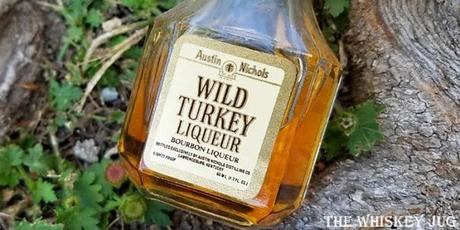
(h) Class 8; cordials and liqueurs.
(h)(2) “Rye Liqueur”, “Bourbon Liqueur” (Rye or Bourbon Cordial)
-
- Bottled at 60° proof (30% ABV) or higher.
- At least 51% (proof gallon) of the distilled spirits used are Bourbon or Rye
- Straight or non-straight Bourbon or Rye counts.
- “Whiskey Distilled From A Bourbon (or Rye) Mash” also counts so long as it “possess a predominant characteristic rye or bourbon flavor”.
- Wine can be used for additional flavoring and coloring, but must be 2.5% or less as outlined in §5.23 (coloring, flavoring, and blending materials – covered at the bottom).
(h)(3) “Rock and Rye”, “Rock and Bourbon”, “Rock and Brandy”, “Rock and Rum”
-
- These are Liqueurs.
- Bottled at 48° proof (24% ABV) or higher
- At least 51% (proof gallon) of the distilled spirits used are Bourbon, Rye, Grape Brandy or Rum
- Straight or non-straight Bourbon or Rye count.
- “Whiskey Distilled From A Bourbon (or Rye) Mash” also counts so long as it “possess a predominant characteristic rye or bourbon flavor”.
- Contains rock candy or sugar syrup.
- Can also contain fruit, fruit juices, or other natural flavoring materials.
- Must have a “predominant characteristic rye, bourbon, brandy, or rum flavor derived from the distilled spirits used”.
- Wine can be used for additional flavoring and coloring, but must be 2.5% or less as outlined in §5.23 (coloring, flavoring, and blending materials – further down).
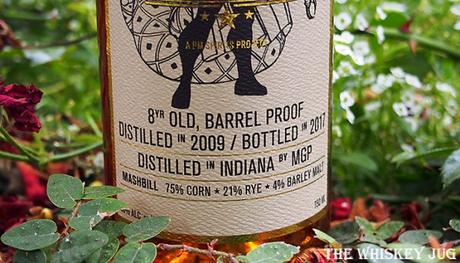
(k) Class 11; geographical designations.
- You can’t use the geographic name of one location if it’s distilled in another.
- Ex: you can’t call something distilled in Indiana a “Kentucky Bourbon”.
- The exception/loop hole to this if you see the word “type” next to the geo… Kentucky Type Bourbon.
- Though if you do see this leave it where it’s at, they’re trying to trick you.
(k)(2)
-
- If a spirit has lost its geographical significance and become a generic term for a style then it can contain a geographical designation.
- Ex: London Dry Gin which is now a style of gin and doesn’t mean it came from London.
- This doesn’t really apply to any Whiskey, but is worth pointing out in case you see someone trying to trick you.
- If a spirit has lost its geographical significance and become a generic term for a style then it can contain a geographical designation.
(k)(3)
-
- Types of alcohol that have not become generic, but contain a geography, cannot be used unless the spirit came from that region.
- Ex: Cognac, Armagnac, Chilean Pisco (or Peruvian), Jamaican Rum, Bourbon and so on.
- Types of alcohol that have not become generic, but contain a geography, cannot be used unless the spirit came from that region.
(k)(4)
-
- “Scotch”, “Scots”, “Highland”, “Highlands” or any other words associated with Scotch Whiskey can’t be used by any non-Scottish Whiskey products.
- Ex: Virginia Distillery got sued for using Highland on their bottle as it was a violation of this rule.
- “Scotch”, “Scots”, “Highland”, “Highlands” or any other words associated with Scotch Whiskey can’t be used by any non-Scottish Whiskey products.

(l) Class 12; products without geographical designations but distinctive of a particular place
(l)(1)
-
- The whiskeys described in (b)(1), (4), (5), and (6) are considered “distinctive products of the United States”.
IF a foreign country makes a whiskey similar to those types then they must call it an “American Type xxx”.- EX: American Type Rye Whiskey
- “produced (distilled, blended) in ____” is also acceptable so long as the blank is filled with the country of origin.
- EX: Rye Whiskey Distilled in Poland.
- HOWEVER, Bourbon cannot be used for any whiskey or whiskey-based spirit created outside of the USA.
- Interesting Note – This is due to a congressional resolution: the 1964 Concurrent Resolution On Bourbon. Which declared Bourbon to be a “distinctive product of the United States” and lead to it being a protected term around the world much like Scotch, Cognac, Champagne or Pisco.
- For more info on this and other important whiskey laws check out “7 Laws That Shaped American Whiskey”.
- IF a whiskey contains a blend of American and Foreign whiskeys then both the % of the foreign whiskey and country of origin need to be stated.
- The whiskeys described in (b)(1), (4), (5), and (6) are considered “distinctive products of the United States”.
(l)(2)
-
- You can’t name a distilled spirit for a product that is a “distinct product” of another country.
- Ex: You can’t call a grape brandy made in the USA a Pisco, nor can Chile make a whiskey and call it Bourbon.
- The loop-hole here is to use the word “type” or a geographical adjective like “American”.
- Ex: American Style Whiskey.
- This does not extend to names that have lost their geographical significance.
- Ex: Aquavit which started as a Scandanavian drink and is now made all over the world.
- You can’t name a distilled spirit for a product that is a “distinct product” of another country.
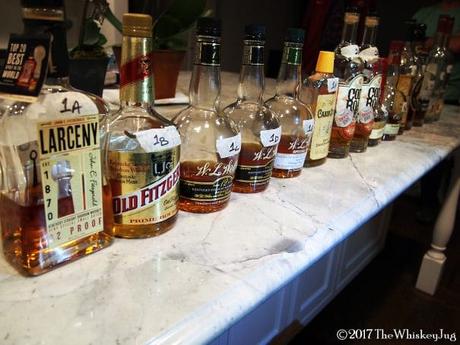
As far as the TTB Standards of Identity for Whiskey goes, we’re at the end. You’ve made it, congrats. But before we completely wrap this post I thought it would be good to include the TTB regulations on Alteration of Class and Type.
They’re closely tied to the TTB Standards of Identity, as referenced above a couple of times, because they lay out how any type or classes of whiskey (or whiskey derivatives) can be changed/what it takes to change them.
§5.23 Alteration of class and type
(a) Additions
(1)
-
- If any substance is added to any type of distilled spirit (Whiskey) then it will change its class and type and will need to be reclassified on the label before it can be sold.
- The only exceptions are the “coloring, flavoring, or blending materials” listed below.
- These are the ones broadly mentioned throughout the TTB Standards of Identity.
(2)
-
- You are free to add “harmless coloring, flavoring, or blending materials” added to any “class or type of distilled spirits” (whiskey) only if it is part of that class or type of spirit.
- 2.5% (by volume) of “Harmless coloring, flavoring, or blending materials such as caramel, straight malt or straight rye malt whiskies, fruit juices, sugar, infusion of oak chips – when approved by the Administrator – or wine” can be added to any spirit type or class even if it’s not an essential part of the distilled spirit.
- However, this can only be done if it is customarily used “in accordance with established trade usage”.
- I.e., you can’t add Caramel Coloring to a Straight Bourbon and still call it a Straight Bourbon. It isn’t customarily used and violates the section on Straight whiskeys.
(3)
(a) “Harmless coloring, flavoring, and blending materials”
-
- You can’t add anything that would make one spirit imitate another, it still has to reflect the original product
- You can’t add anything at all to Neutral Spirits or Straight Whiskey.
- The one exception is vodka which can use sugar(<2 grams per liter) and “a trace amount of citric acid” (Flavored Vodka).
(b) Extractions
-
- If you remove something from the spirit so that it no longer “possess the taste, aroma, and characteristics generally attributed to that class or type of distilled spirit” that alters what it is and needs to be reclassified before labeling.
- Specifically for Straight Whiskey, if you remove more than 15% “of the fixed acids, or volatile acids, or esters, or soluble solids, or higher alcohols, or more than 25 percent of the soluble color” you can’t call it a straight whiskey anymore.
- I.e., filter it too much and you won’t be able to call it a Straight Whiskey anymore.
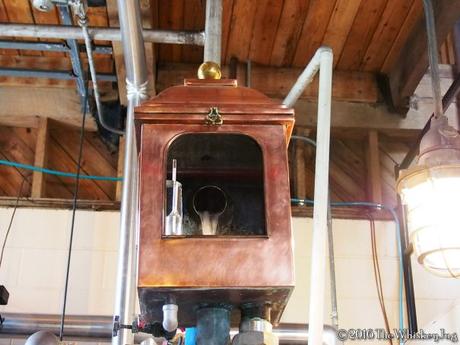
I hope you enjoyed this trip through the TTB Standards Of Identity for Whiskey in Plain English. Follow up posts around the titillating subjects of whiskey label requirements, age statement regulations and Specialty Whiskeys are coming soon.
P.S. A MASSIVE THANK YOU to Wade Woodard for giving this a once-over to make sure I didn’t screw anything up too bad in the translation!
